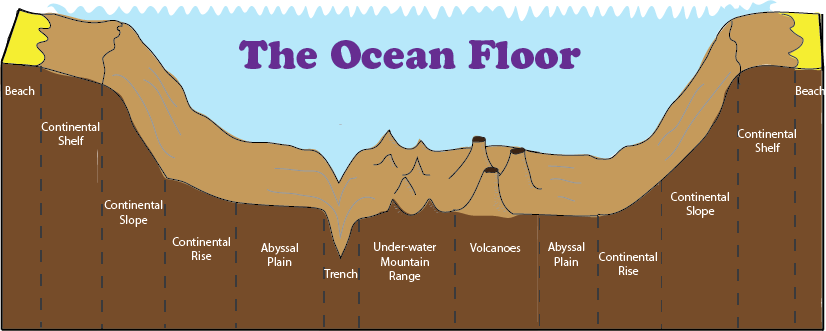Important Facts For Prelims
Sunken Ocean Floor above Earth’s Core
- 14 Apr 2023
- 5 min read
Why in News?
Recently, Geologists have discovered a previously unknown layer between the core and the mantle of the Earth, likely to be a thin but dense sunken ocean floor.
- This layer is pencil-thin in geological terms, measuring tens of kilometers, which is minuscule when compared to the thickness of Earth's other layers.
What are the Key Highlights?
- The discovery of this ocean floor layer could play an important role in how heat escapes from the core.
- The material from ancient ocean floors can also get caught up in mantle plumes, traveling back to the surface through volcanic eruptions.
- There are mountains on the core, these underground "mountains" could be up to 5 times taller than Mt. Everest, and they could help explain the changes in physical properties between the outer core and the mantle, which are greater than those between the surface of the Earth and the air above it.
- The subducted oceanic material could collect along the core-mantle boundary where it can be pushed by the slowly flowing rock in the mantle over time. This suggests that Earth's history is more complex than previously thought, with the possibility of multiple sunken ocean floors adding to the complexity of the planet's geological makeup.
What are the Implications for Future Research?
- This new discovery opens up new avenues of research for geologists and could lead to a better understanding of Earth's geological processes.
- The detailed method used to probe a large portion of the southern hemisphere using sound wave echoes from the core-mantle boundary could be used in other parts of the world to uncover similar anomalies.
- It also highlights the importance of continued investment in high-resolution imaging technology for exploring the mysteries of our planet's interior.
What is an Ocean Floor?
- The ocean floor is the bottom of the ocean that covers more than 70% of the Earth’s surface. It has different features and depths depending on the location and the movement of tectonic plates. The ocean floor can be divided into four main zones:
- Continental Shelf:
- The shallowest and widest part of the ocean floor.
- Extends from the coast to the edge of the continent, where it drops sharply into the continental slope.
- Rich in marine life and resources, such as fish, oil, and gas.
- Continental Slope:
- The steep slope that connects the continental shelf to the abyssal plain
- Cut by deep canyons and valleys that are formed by underwater landslides and rivers of sediment.
- Home to some deep-sea creatures, such as octopuses, squids, and anglerfish.
- Abyssal Plain:
- The flattest part of the ocean floor.
- Covers most of the ocean basin and lies between 4,000 and 6,000 meters below sea level.
- Covered by a thick layer of fine sediments that are carried by ocean currents and settle on the seafloor.
- Inhabited by some of the most bizarre and mysterious animals on Earth, such as giant tube worms, bioluminescent fish, and vampire squids.
- Oceanic Deeps or Trenches:
- These areas are the deepest parts of the oceans.
- The trenches are relatively steep sided, narrow basins. They are some 3-5 km deeper than the surrounding ocean floor.
- They occur at the bases of continental slopes and along island arcs and are associated with active volcanoes and strong earthquakes.
- That is why they are very significant in the study of plate movements. As many as 57 deeps have been explored so far; of which 32 are in the Pacific Ocean; 19 in the Atlantic Ocean and 6 in the Indian Ocean.
- Continental Shelf:
UPSC Civil Services Examination, Previous Year Question (PYQ)
Q. In the structure of planet Earth, below the mantle, the core is mainly made up of which one of the following? (2009)
(a) Aluminium
(b) Chromium
(c) Iron
(d) Silicon
Ans: (c)





